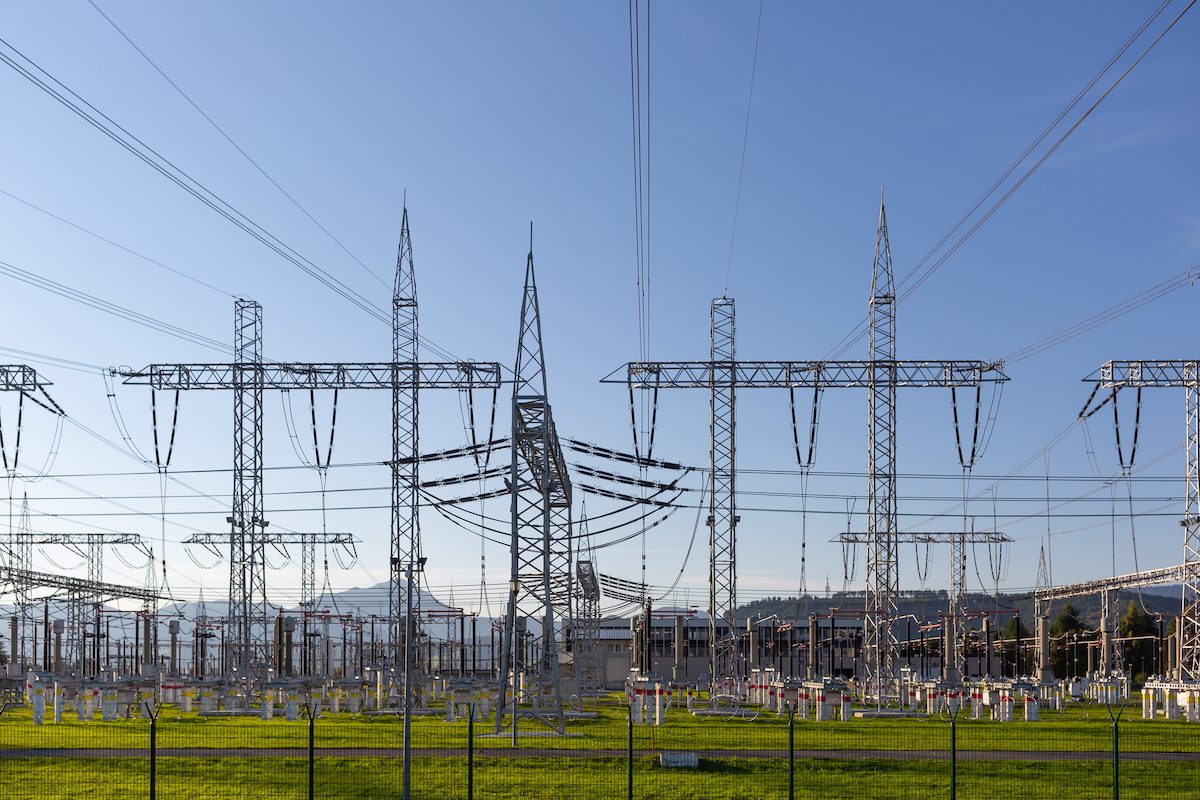
Electricity distribution station from a power plant with poles and wires on a summer day with green grass and blue skies.
The regional electric grid operator PJM Interconnection forecasts for the first time that it might not be able to supply enough power to Pennsylvania and other states this summer in “extreme” circumstances and would need to ask some consumers to reduce their usage.
“Available generation capacity may fall short of required reserves in an extreme planning scenario that would result in an all-time PJM peak load of more than 166,000 MW,” the company said in a statement. “Under such circumstances, PJM would call on contracted demand response programs to meet its required reserve needs.”
Otherwise, PJM said it believes it has sufficient capacity to meet typical peak demand this summer. It forecasts peak demand to reach 154,000 megawatts.
By the numbers
It takes one megawatt to power about 800 homes, PJM said. It has 179,200 megawatts of generation capacity and can call on some users to provide another 7,900 megawatts if needed by lowering their consumption.
The summer peak load record was set in 2006 when the grid needed 165,563 megawatts. The past two years, summer demand has reached 152,700 megawatts in 2024 and 147,000 megawatts in 2023.
PJM’s contracted demand response program allows the grid operator to call on participants, who have to opt in, to lower their power consumption during system emergencies in exchange for compensation.
PJM operates the electric grid in all or part of 13 states including Pennsylvania, Ohio, Virginia, West Virginia and New Jersey.
Cause for concern
The Pennsylvania Public Utilities Commission on Wednesday released summer readiness reports from PJM and major electric distribution companies serving the state.
“The reports show that utilities and PJM have made extensive preparations to meet expected summer electricity demands, including system upgrades, emergency response planning and coordination with regioal partners,” the state regulatory body since in a statement.
However, the National Oceanic and Atmospheric Administration is forecasting this summer to be hotter and wetter than in previous years. There’s also “an above average hurricane season” in the Atlantic Ocean. Those factors could drive up demand while also leading to service disruptions.
“We’ve already seen how quickly conditions can change — like the late-April storm that knocked out power to more than 500,000 customers in southwestern Pennsylvania,” said Stephen M. DeFrank, chairman of the utilities commission. “That’s why preparedness, coordination and resilience matter more than ever.”

Pennsylvanians get a boost as lawmakers back plan for cheaper, cleaner energy
Gov. Josh Shapiro’s Lightning Plan recently had two bills move forward with bipartisan support in the Pennsylvania state House. Here’s what they’d...

To prevent blackouts, Trump administration keeps aging Pennsylvania power plant online through summer
The U.S. Department of Energy has ordered another power plant, this time an oil and gas plant in Pennsylvania, to keep its turbines running through...

EPA rolls back PFAS regulations: What it means for Bucks County
The EPA announced it's extending the deadline on removing two forever chemicals from public water systems and rescinding regulations on three other...

With public transit agencies in dire straits, Pa. House puts Shapiro’s funding plan into play
As the commonwealth’s two largest public transportation systems barrel toward fiscal crises and sweeping service cuts, Pennsylvania lawmakers...

Potholes and traffic: Pennsylvania ranks 36th in Best States to Drive in 2025
It won’t come as any surprise to Pennsylvania drivers to learn that the commonwealth did not rank too high in a recent report of the Best States to...




